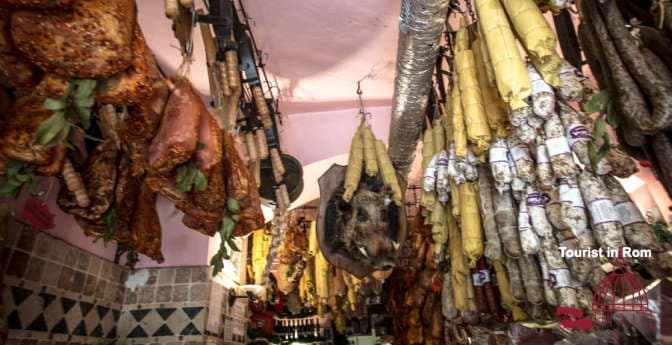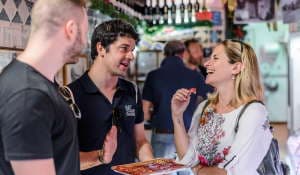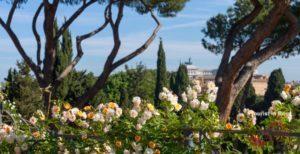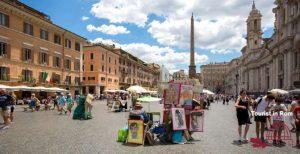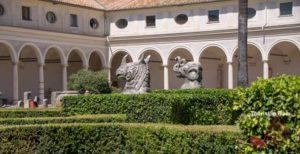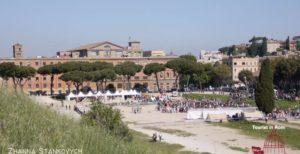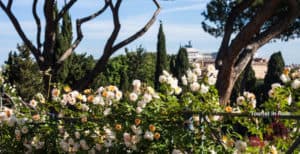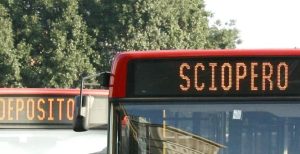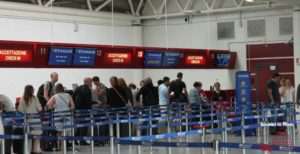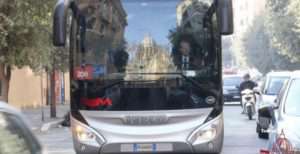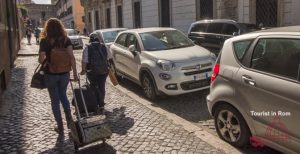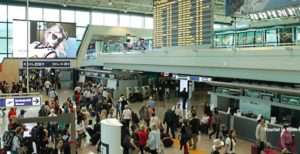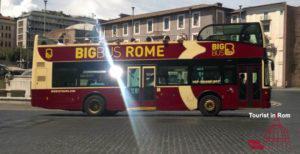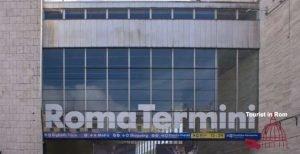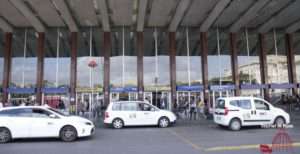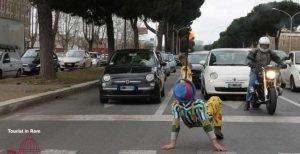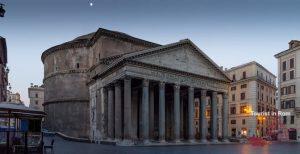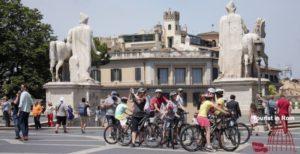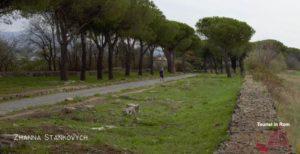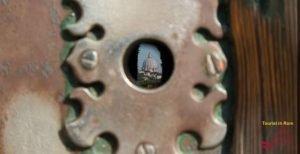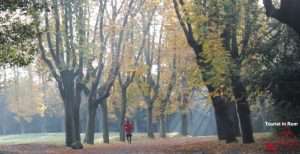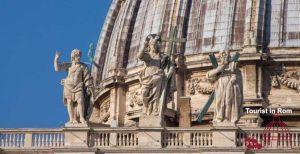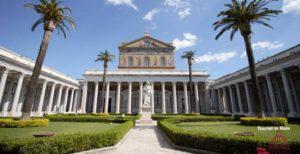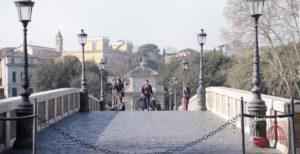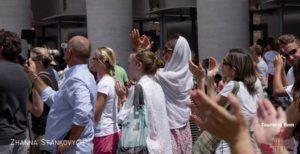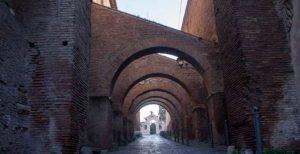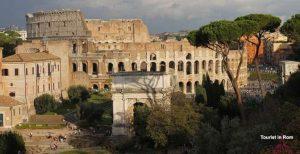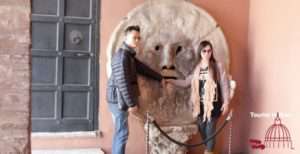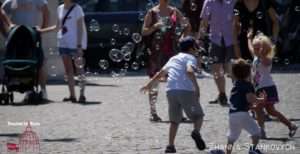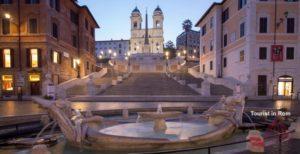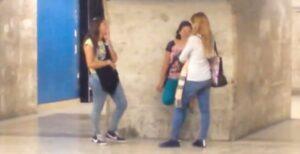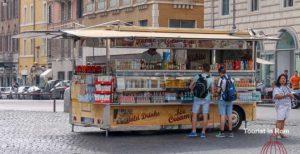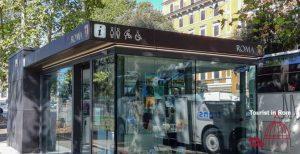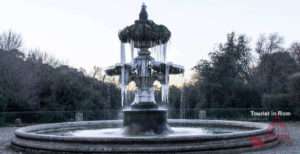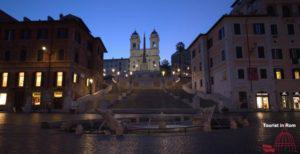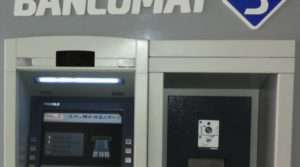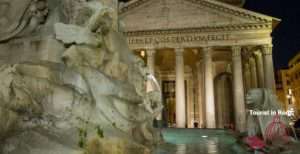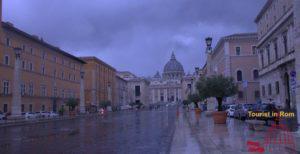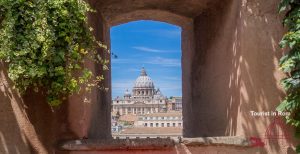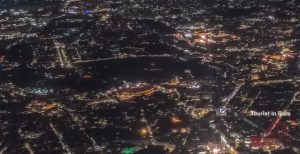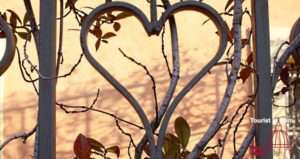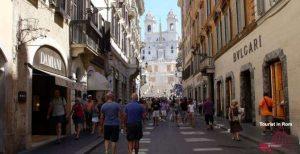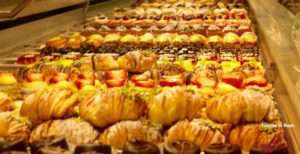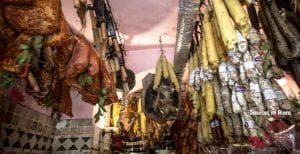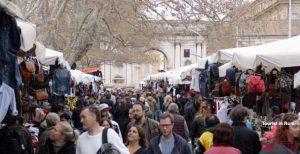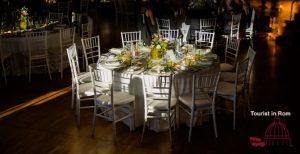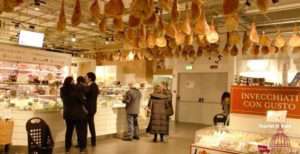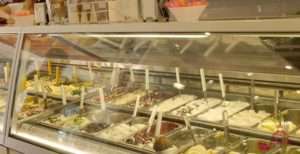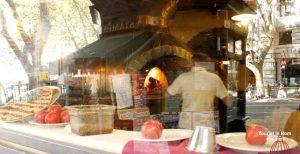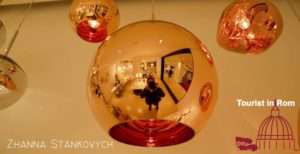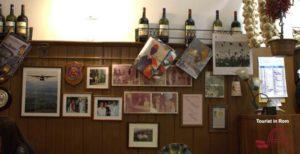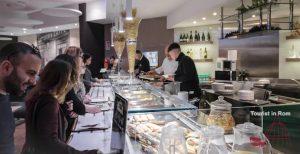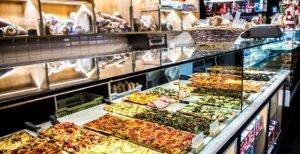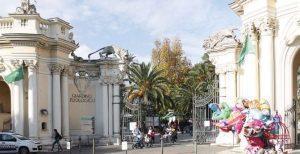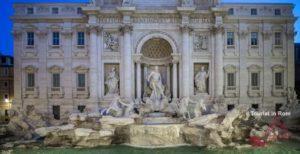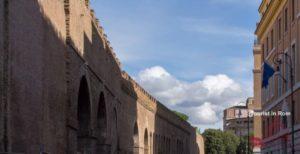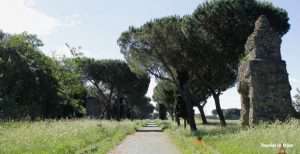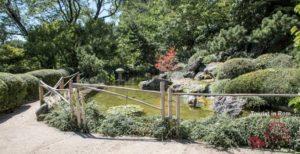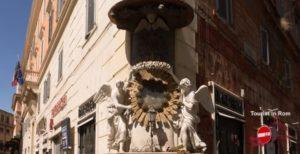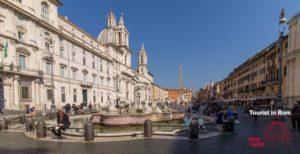Enjoy Roman specialties and stories on a walking tour. Read our report from the GetYourGuide Original Street Food Tour.
Partner-Links helfen uns dabei, unsere Informationen kostenlos bereitzustellen. Für abgeschlossene Buchungen erhalten wir eine Provision – ohne Mehrkosten für Sie! Mehr
Partner links help us to provide our information free of charge. For completed bookings we receive a commission – at no extra cost to you! More
I link dei partner ci aiutano a fornire gratuitamente le nostre informazioni. Riceviamo una commissione per le prenotazioni completate, senza alcun costo aggiuntivo per voi! Di più
If you are interested in Roman cuisine and would like to take a short tour of the center of Rome, this is the tour for you. While you taste Roman appetizers and pizza, you’ll get lots of interesting information about the places you’ll visit during the tour.
Our meeting point is in Campo de’ Fiori under the statue of the philosopher and astronomer Giordano Bruno, who was burned at the stake by the Inquisition on this square.
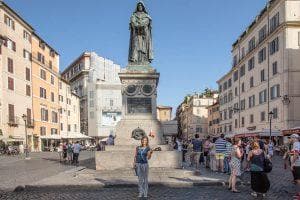
Here Francesca, our guide, is waiting for us. We present ourselves briefly and talk about our interests. Francesca studied languages, archeology and history. During her studies she also collaborated in the excavations of the Palatine Hill.
That’s why this is a cult tour for us: this tour is not just about Roman food culture, but it also gives you a broad overview from antiquity to modern times and will introduce you to some hidden gems of Rome. Only those who love Rome can guide such a tour!
Campo de’ Fiori
Our guide tells us many interesting things about this unique place. In the morning here is a famous market. We learn where to find the largest selection of spices and where to buy the best cheese.
But Campo de’ Fiori also has an important history. What happened here and why is the square so unique in Rome?
To digest this information, we go to a nearby Norcineria. Here we find hams and sausages in the tradition of Norcia, a city in the mountains of Umbria. Norcia is also known for its truffles. In this ancient shop we taste cold cuts with a good red wine and our guide explains the specialties. Do you know Coppiette? What is the difference between Pancetta and Guanciale? Do you know truffle salami?
The Theater of Pompey
Now we go through a hidden passage and find ourselves on an oval square. Is this the shape of the old theather? How was the theater at that time? It’s interesting and exciting. We’re practically alone here – off the beaten path. A little surprising is that the theater is not located in Piazza del Teatro di Pompeo. It is not easy to navigate in these alleys!
Just around the corner is Roscioli, a historic oven, which is one of the best pizza take away in Rome.
At Roscioli we taste some slices of pizza with a nice fresh beer.
The Saints Blaise and Charles at the sink manufacturers
We continue towards the Ghetto and we pass a rather inconspicuous church.
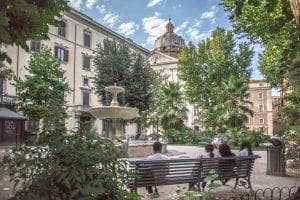
It is called Santi Biagio and Carlo ai Catinari. The Catinari were the sink manufacturers who had their stalls here. Unfortunately the church can not be visited due to the earthquake of 2016.
Our guide tells us about the third largest dome in Rome. But where is it? We can’t see it standing in front of the church!
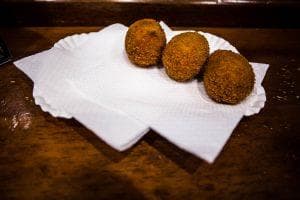
Now we go to taste supplì. Supplì are fried rice balls with the heart of mozzarella, a typically Roman speciality. I have always thought that the name was a short of “supplizio”, means “torment” but it is not true. Ask about the origin of the name is, you will be surprised!
The Ghetto
Now we are already full, but continue towards the Ghetto. Our guide tells the story of the Ghetto and orders a fried artichoke, “Carciofo alla Giudia”, before continuing to the Portico di Ottavia and the Teatro di Marcello. She explains that the Rome underground can be compared to a lasagna. You can read the history of the different centuries and millennia, layer by layer. A very impressive example can be seen on the Portico di Ottavia. At Marcello’s theater we see a pianist warming up for a concert.
Meanwhile, the artichoke alla giudia is ready and we take a short break to enjoy this specialty of Roman-Jewish cuisine.
We continue to the Fontana delle Tartarughe, which was built by Bernini. This fountain is one of the most photographed places in Rome.
Largo di Torre Argentina
Largo di Torre Argentina is the place where Julius Caesar was assassinated.
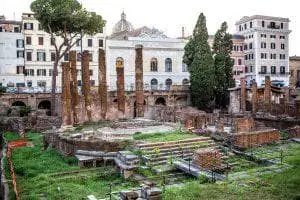
Here, Augustus built the largest latrine in Rome to condemn this place forever. Even today, the place seems abandoned. It suffers from the weight of history.
The ruins date from the 4th to the 2nd century BC and there is little evidence to allow conclusions on their use. Therefore, the ruins are named only with letters, although it is believed at least on one side, that it is a temple of the goddess Fortuna. She is the patron of the Torre Argentina cat colony and her statue is in the Museum Centrale Montemartini.
Piazza della Minerva and Pantheon
Rome is full of churches dedicated to Mary. The church in this square is called Maria sopra Minerva. The name allows conclusions on the previous use of the place.
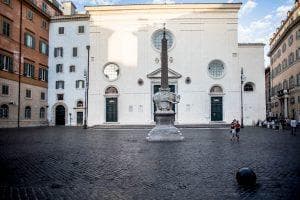
On the square there is an elephant carved by Bernini that carries an Egyptian obelisk. It is said of Bernini that in the construction of his monuments he used some refined subtleties, as also in the case of the Fountain of the Four Rivers in Piazza Navona. Let the guide tell you the story.
We continue towards the Pantheon, which is already closed at this time. The dome of the Pantheon has the largest diameter of all the domes of Rome.
We move towards the end of our tour and pass two columns that are a remnant of Nero’s baths.
Our destination is now the “Gelato Point”, an ice cream parlor, which we consider one of the best ice cream parlors in Rome. Here everyone will find its favorite flavour, be it pistachio, fruit or cream. The South Tyrolean Günther Rohregger brought the specialty “mountain pine”, “Pino mugo” from his homeland, which left us with a special impression.
We would like to thank our guide Francesca, who guided us with enthusiasm and expert knowledge. Although we have known Rome for a long time, we have learned a lot on this tour and she was able to answer all our questions.
All photos © Zhanna Stankovych
